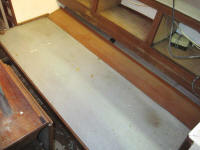
110 Cookson Lane | Whitefield, ME 04353 | 207-232-7600 | tim@lackeysailing.com
Bit by bit, piece by piece, the interior surrendered to my efforts. Over the course of the day, I made additional progress towards the desired end result of removing everything portable that required refinishing or reworking.
In the saloon, the starboard settee featured a convertible top that slid out to create a wider sleeping berth. This sliding top was held in place by a couple simple cleats, and since I knew I'd need to work beneath the area, at a minimum, and also refinish the trim and top itself, I removed the cleats and the plywood top.
The port side of the saloon featured a different design, with an original pilot berth above (as opposed to the storage lockers on the starboard side) and several convertible features, beginning with a fold-down berth fiddle at the edge of the pilot berth. This piece was secured with a full-length piano hinge, which also had been covered with some glued-on wood veneer to cover the hinge when the unit was folded up. Removal took some time.
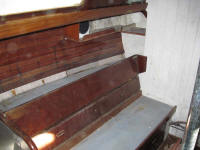
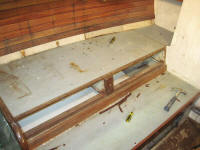
The lower section of the settee featured a hinged platform that lifted to reveal an additional platform and storage space, the hinged section also secured with a full-length piano hinge. I removed this piece for safekeeping and refinishing. I also removed a corner shelf from above the pilot berth, and all the wooden ceiling strips against the hull, reserving all for safekeeping and potential re-use after refinishing.
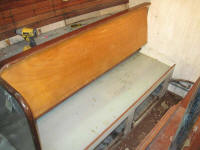
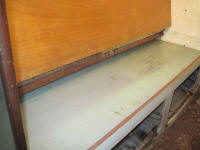
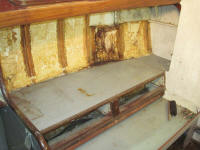
I was able to remove a piece of galley counter fiddle, incorporating multiple pieces and angles, in a single unit.
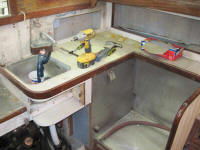
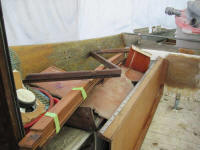
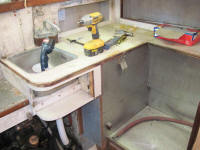
Earlier, I called the saloon table a marvel of engineering--and it was (is). However, it was a challenge to figure out how to remove it. I wanted to dismantle it as little as possible, as I didn't have time for a correspondence course in engineering to determine how to reassemble it later, but finding out how it was secured in place was complex in and of itself.
Eventually, I removed the forward folding section by unscrewing the two hinges that secured it to the after, fixed section. Then, I could better focus on the fixed portion to see what fasteners were actually holding it in place, an which ones would be the minimum to remove in order to pull the table out.
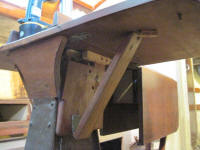
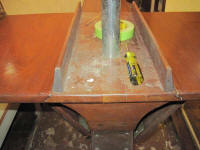

Eventually, I removed six bunged fasteners from the top of the fixed table, carefully removed a small add-on filler piece at the aft end of the centerboard cable pole, and removed four additional screws from some cleats beneath the table; this released the table from the boat's grasp, and I removed it, leaving a few pieces of support structure in place.

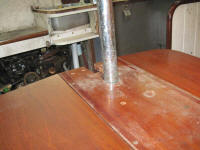
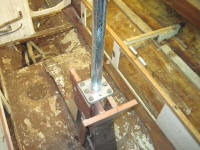
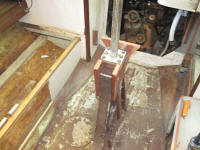
Continuing forward, I discovered that a plywood shelf above a small set of drawers on the starboard side had been wet and was delaminated, but removing one exposed screw allowed me to easily pull it out. Meanwhile I removed the two heavy doors from the head compartment and the locker across the way.

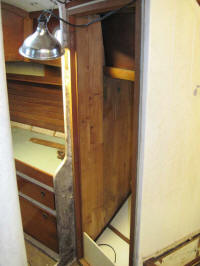
The head was a dismantling project in itself. I removed one door that was already loose, but other doors were secured with full-length piano hinges, and I couldn't face them just yet. I'd attack the head, its hoses, the inflatable bladdder tank beneath the v-berth, and the cabinetry on another day.
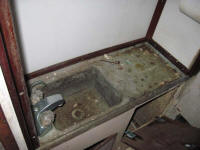
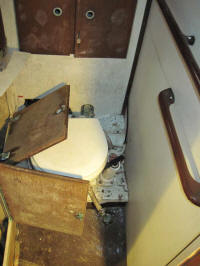
In the v-berth, I removed two folding berth fiddles that were held on with piano hinges, pulled thin packing-type foam away from the hull, which had been glued in place as a sort of insulation (and which was everywhere; I'd been removing it as I went along), and removed a few loose pieces that were stored there.
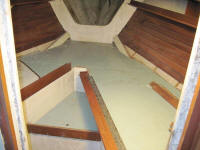
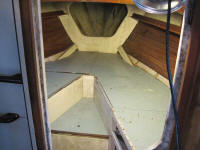
Six small ports--three opening and three fixed--were still in place in the forward part of the boat, so I moved on to their removal. All appeared to be in good condition, though there'd be a need to restore them cosmetically. Each was held in place with numerous screws; when I removed the first port, I carefully set the screws down in order in case, like on other boats I'd worked on, each screw was a custom length, but I determined that they were all the same size, so I didn't bother doing this with the other ports.
The internal plywood veneer was badly damaged from water infiltration around several of the ports. It appeared that the structural cabin trunk was a separate piece, with a 1/4" plywood veneer on the inside, but further investigation later in the process would point to the true construction and condition of the trunk, and the appropriate means of repair of these damaged areas.
Originally, there'd been a forward-facing port or deadlight in the forward face of the cabin trunk, but someone had removed it and filled in the hole from the outside.
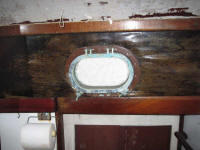
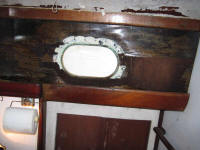
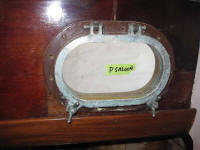
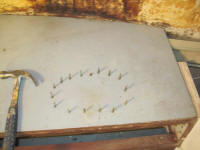
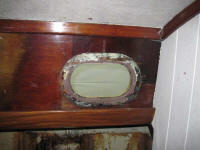
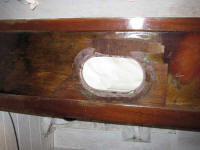
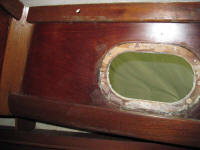

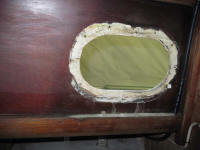
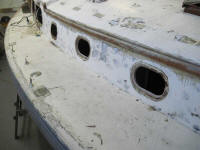
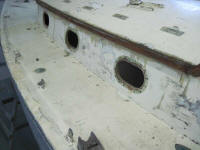
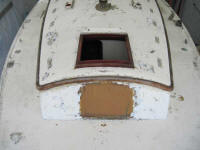
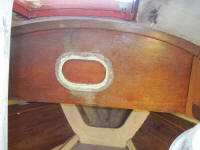
By the end of the day, there was a pretty good pile of trim and pieces in the cockpit, which I later removed to various storage areas for safekeeping till a later time.
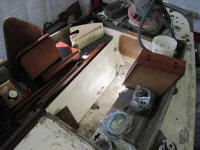
Total Time on This Job Today: 5.5 hours
